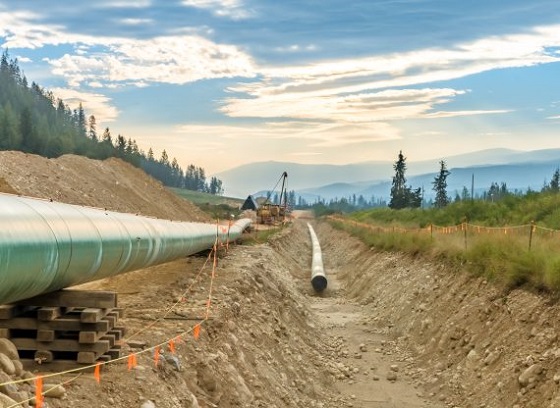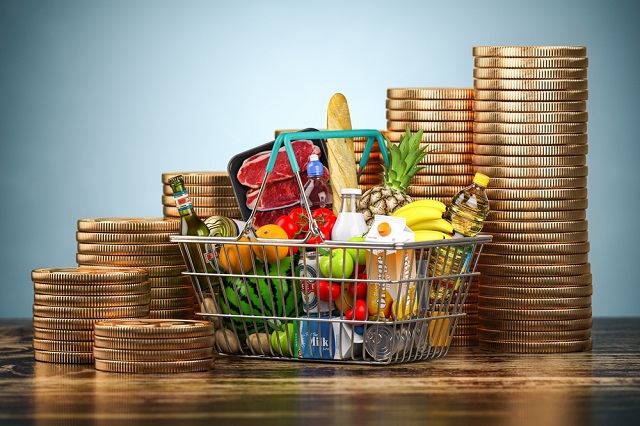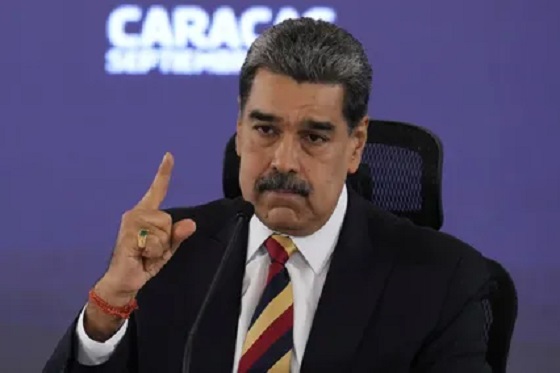Energy
Trump asserts energy dominance, set to meet oil titans amid trade war

 MxM News
MxM News
Quick Hit:
President Donald Trump is taking decisive action to strengthen America’s energy sector, set to meet with top oil executives next week at the White House. The 47th president, who has prioritized energy independence and economic growth, is working to expand domestic oil and gas production while countering foreign market pressures and trade challenges. Industry leaders recognize Trump’s commitment to unleashing U.S. energy dominance, a stark contrast to the regulatory stranglehold of the Biden years.
Key Details:
-
Trump’s upcoming meeting with oil and gas leaders will be his first major sit-down with the industry since his second inauguration, reinforcing his commitment to energy independence.
-
The president’s policies have already slashed regulations and boosted U.S. energy production, but industry leaders seek further collaboration to ensure continued growth.
-
While some executives have voiced concerns over crude price fluctuations, Trump remains focused on lowering energy costs for American consumers while keeping the industry thriving.
Diving Deeper:
President Trump has long championed American energy as the backbone of economic prosperity and national security. Unlike his predecessor, who waged a war on fossil fuels in favor of radical climate policies, Trump has embraced U.S. oil and gas, calling it “liquid gold” and positioning it as a cornerstone of his administration’s economic agenda.
The meeting, set to include top oil executives and members of the American Petroleum Institute, will focus on advancing U.S. energy production. Trump’s newly formed National Energy Dominance Council, led by Interior Secretary Doug Burgum and Energy Secretary Chris Wright, will also play a key role in shaping policy discussions.
Industry leaders like Harold Hamm of Continental Resources and Kelcy Warren of Energy Transfer LP, both of whom backed Trump’s 2024 campaign, recognize the president’s unwavering support for the oil and gas sector. Trump’s administration has already implemented critical reforms to streamline permitting, cut bureaucratic red tape, and expand drilling opportunities—moves that starkly contrast with the Biden administration’s hostility toward domestic production.
Despite global economic factors influencing oil prices—such as increased OPEC+ output and weak Chinese demand—Trump’s policies have laid the groundwork for sustained industry success. While some executives argue that crude prices must remain above $80 per barrel for optimal production, Trump’s focus remains on ensuring affordable energy for American families and businesses.
Trade policy has also been a point of discussion, with some in the industry concerned about Trump’s tariffs on steel and aluminum, which are critical for drilling operations. However, Trump has consistently prioritized fair trade and American manufacturing, refusing to allow foreign competitors to undermine U.S. industry. Unlike the Biden administration, which caved to globalist interests, Trump is leveraging tariffs as a tool to strengthen domestic production.
Bethany Williams, spokesperson for the American Petroleum Institute, emphasized Trump’s impact: “President Trump’s energy agenda has set our nation on a path toward energy dominance. We appreciate the opportunity to discuss how American oil and natural gas are driving economic growth, strengthening our national security, and supporting consumers with the president and his team.”
As Trump continues to roll back Biden-era climate mandates and prioritize U.S. energy independence, his administration is making clear that American oil and gas will once again lead the global market. With the full backing of industry leaders, Trump is proving that energy dominance isn’t just a slogan—it’s a reality under his leadership.
Energy
75 per cent of Canadians support the construction of new pipelines to the East Coast and British Columbia

-
71 per cent of Canadians find the approval process too long.
-
67 per cent of Quebecers support the Marinvest Energy natural gas project.
“While there has always been a clear majority of Canadians supporting the development of new pipelines, it seems that the trade dispute has helped firm up this support,” says Gabriel Giguère, senior policy analyst at the MEI. “From coast to coast, Canadians appreciate the importance of the energy industry to our prosperity.”
Three-quarters of Canadians support constructing new pipelines to ports in Eastern Canada or British Columbia in order to diversify our export markets for oil and gas.
This proportion is 14 percentage points higher than it was last year, with the “strongly agree” category accounting for almost all of the increase.
For its part, Marinvest Energy’s natural gas pipeline and liquefaction plant project, in Quebec’s North Shore region, is supported by 67 per cent of Quebecers polled, who see it as a way to reduce European dependence on Russian natural gas.
Moreover, 54 per cent of Quebecers now say they support the development of the province’s own oil resources. This represents a six-point increase over last year.
“This year again, we see that this preconceived notion according to which Quebecers oppose energy development is false,” says Mr. Giguère. “Quebecers’ increased support for pipeline projects should signal to politicians that there is social acceptability, whatever certain lobby groups might think.”
It is also the case that seven in ten Canadians (71 per cent) think the approval process for major projects, including environmental assessments, is too long and should be reformed. In Quebec, 63 per cent are of this opinion.
The federal Bill C-5 and Quebec Bill 5 seem to respond to these concerns by trying to accelerate the approval of certain large projects selected by governments.
In July, the MEI recommended a revision of the assessment process in order to make it swift by default instead of creating a way to bypass it as Bill C-5 and Bill 5 do.
“Canadians understand that the burdensome assessment process undermines our prosperity and the creation of good, well-paid jobs,” says Mr. Giguère. “While the recent bills to accelerate projects of national interest are a step in the right direction, it would be better simply to reform the assessment process so that it works, rather than creating a workaround.”
A sample of 1,159 Canadians aged 18 and older were surveyed between November 27 and December 2, 2025. The results are accurate to within ± 3.5 percentage points, 19 times out of 20.
Business
Geopolitics no longer drives oil prices the way it used to

This article supplied by Troy Media.
Oil markets are shrugging off war and sanctions, a sign that oversupply now matters more than disruption
Oil producers hoping geopolitics would lift prices are running into a harsh reality. Markets are brushing off wars and sanctions as traders focus instead on expectations of a deep and persistent oil glut.
That shift was evident last week. Despite several geopolitical developments that would once have pushed prices higher, including the U.S. seizure of a Venezuelan crude tanker and fresh Ukrainian strikes on Russian energy infrastructure, oil markets barely reacted, with prices ending the week lower.
Brent crude settled Friday at US$61.12 a barrel and U.S. West Texas Intermediate at US$57.44, capping a weekly drop of more than four per cent.
Instead of responding to disruption headlines, markets were reacting to a different risk. Bearish sentiment, rather than geopolitics, continued to dominate as expectations of a “2026 glut” took centre stage.
At the heart of that outlook is a growing supply overhang. The oil market is grappling with whether sanctioned Russian and Iranian cargoes should still be counted as supply. That uncertainty helps explain why prices have been slow to react to a glut that is already forming on the water, said Carol Ryan, writing for The Wall Street Journal.
The scale of that buildup is significant. There are 1.4 billion barrels of oil “on the water,” 24 per cent higher than the average for this time of year between 2016 and 2024, according to oil analytics firm Vortexa. These figures capture shipments still in transit or cargoes that have yet to find a buyer, a clear sign that supply is running ahead of immediate demand.
Official forecasts have reinforced that view. Last week, the International Energy Agency trimmed its projected 2026 surplus to 3.84 million barrels per day, down from 4.09 million barrels per day projected previously. Even so, the IEA still sees a large oversupply relative to global demand.
Demand growth offers little relief. The IEA expects growth of 830 kb/d (thousand barrels per day) in 2025 and 860 kb/d in 2026, with petrochemical feedstocks accounting for a larger share of incremental demand. That pace remains modest against the volume of supply coming to market.
OPEC, however, has offered a different assessment. In its latest report, the group pointed to a near balance, forecasting demand for OPEC+ crude averaging about 43 million barrels per day in 2026, roughly in line with what it produced in November.
Reflecting that confidence. OPEC+ kept policy steady late in November, pausing planned output hikes for the first quarter of 2026 while more than three million barrels per day of cuts remain in place. Those measures are supportive in theory, but markets have shown little sign of being persuaded.
Recent geopolitical events underline that scepticism. The ongoing Russia-Ukraine war and Ukrainian strikes on Russian energy infrastructure, including reported hits on facilities such as the Slavneft-YANOS refinery in Yaroslavl, again failed to lift prices. Russia-Ukraine headlines pulled prices down more than strikes lifted them, according to media reports, suggesting traders were more attuned to “peace deal” risk than to supply disruption.
Washington’s move against Venezuelan crude shipments offered another test. The U.S. seizure of a Venezuelan tanker, the first formal seizure under the 2019 sanctions framework, had a muted price impact, writes Marcin Frackiewicz of Oilprice.com.
Venezuela’s exports fell sharply in the days that followed, but markets remained largely unmoved. One explanation is that Venezuela’s output is no longer large enough to tighten global balances the way it once did, and that abundant global supply has reduced the geopolitical premium.
Taken together, the signal is hard to miss. Oil producers, including in Canada, face a reality check in a market that no longer rewards headlines, only discipline and demand.
Toronto-based Rashid Husain Syed is a highly regarded analyst specializing in energy and politics, particularly in the Middle East. In addition to his contributions to local and international newspapers, Rashid frequently lends his expertise as a speaker at global conferences. Organizations such as the Department of Energy in Washington and the International Energy Agency in Paris have sought his insights on global energy matters.
Troy Media empowers Canadian community news outlets by providing independent, insightful analysis and commentary. Our mission is to support local media in helping Canadians stay informed and engaged by delivering reliable content that strengthens community connections and deepens understanding across the country.
-

 Health1 day ago
Health1 day agoFDA warns ‘breast binder’ manufacturers to stop marketing to gender-confused girls
-

 Daily Caller1 day ago
Daily Caller1 day agoTrump Reportedly Escalates Pressure On Venezuela With Another Oil Tanker Seizure
-

 espionage2 days ago
espionage2 days agoCarney Floor Crossing Raises Counterintelligence Questions aimed at China, Former Senior Mountie Argues
-

 Business18 hours ago
Business18 hours agoThere’s No Bias at CBC News, You Say? Well, OK…
-

 Business1 day ago
Business1 day agoTaxing food is like slapping a surcharge on hunger. It needs to end
-

 Energy2 days ago
Energy2 days ago75 per cent of Canadians support the construction of new pipelines to the East Coast and British Columbia
-

 Health1 day ago
Health1 day agoAll 12 Vaccinated vs. Unvaccinated Studies Found the Same Thing: Unvaccinated Children Are Far Healthier
-

 Opinion15 hours ago
Opinion15 hours agoReligion on trial: what could happen if Canada passes its new hate speech legislation






